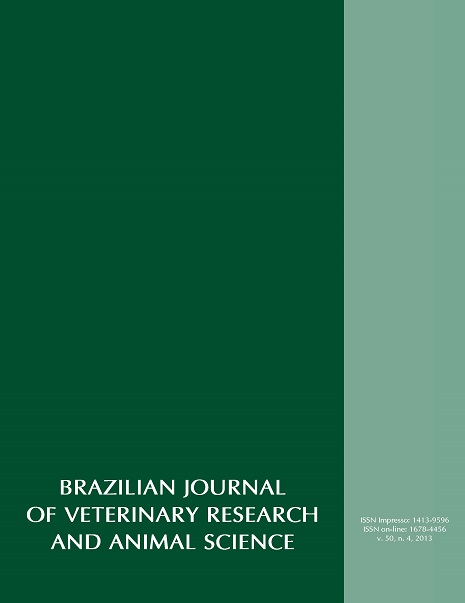Histology of ostrich intestine (Struthio camelus, Linnaeus 1758)
DOI:
https://doi.org/10.11606/issn.2318-3659.v50i4p265-269Keywords:
Ostrich, Histology animal, Intestines, Nodular lymphoidAbstract
Regardless of the ostrich (Struthio camelus) share many adaptations to other evolutionary present birds, these animals show some peculiar anatomical features such as their digestive tract than the colon is greater than the cecum. For some time this bird has been economically exploited and especially as an alternative source of animal protein for human consumption. This study examined the histological bowel ostrich produced in good environmental management and nutrition. Thirteen ostriches were used, with 18 to 30 months old, from Brazil Ostrich company, and sent for slaughter in Slaughterhouse School, University of São Paulo Campus Administrative Pirassununga. The animals were killed with pneumatic gun and after bleeding and evisceration were collected, samples of different intestinal segments: duodenum, jejunum, ileum and cecum double. The materials were processed, stained with hematoxylin - eosin (HE) and examined under brightfield microscopy. The results showed that the villi are present in the duodenum but not exist in the cecum. Of the four intestinal segments examined the cecum showed the highest number of goblet cells. Lymph nodes and lymphocytes were observed in all segments examined. In the cecum lymph nodes are added to form the Peyer’s patch. The plan of histological intestinal segments examined followed the pattern observed in other domestic mammals and birds. The knowledge of the histology of the intestines of these animals can provide insight for comparative assessment procedures for environmental management and nutrition that may increase the levels of production and productivity of this livestock activity.Downloads
Download data is not yet available.
Downloads
Published
2013-08-17
Issue
Section
UNDEFINIED
License
The journal content is authorized under the Creative Commons BY-NC-SA license (summary of the license: https://
How to Cite
1.
Saviani G, Ponso R, Cogliati B, Araújo CMM de, Santos JM dos, Mariano ANB, et al. Histology of ostrich intestine (Struthio camelus, Linnaeus 1758). Braz. J. Vet. Res. Anim. Sci. [Internet]. 2013 Aug. 17 [cited 2024 Apr. 25];50(4):265-9. Available from: https://revistas.usp.br/bjvras/article/view/74675





